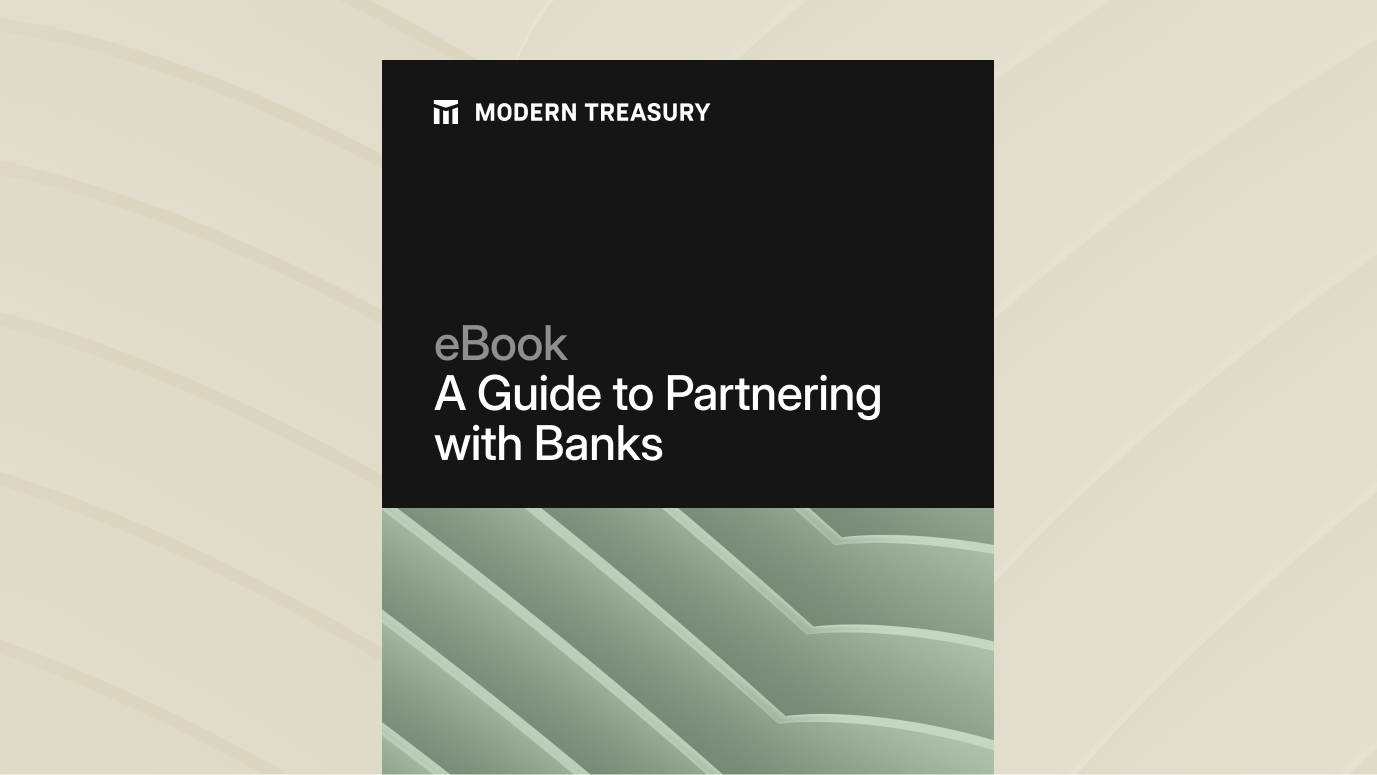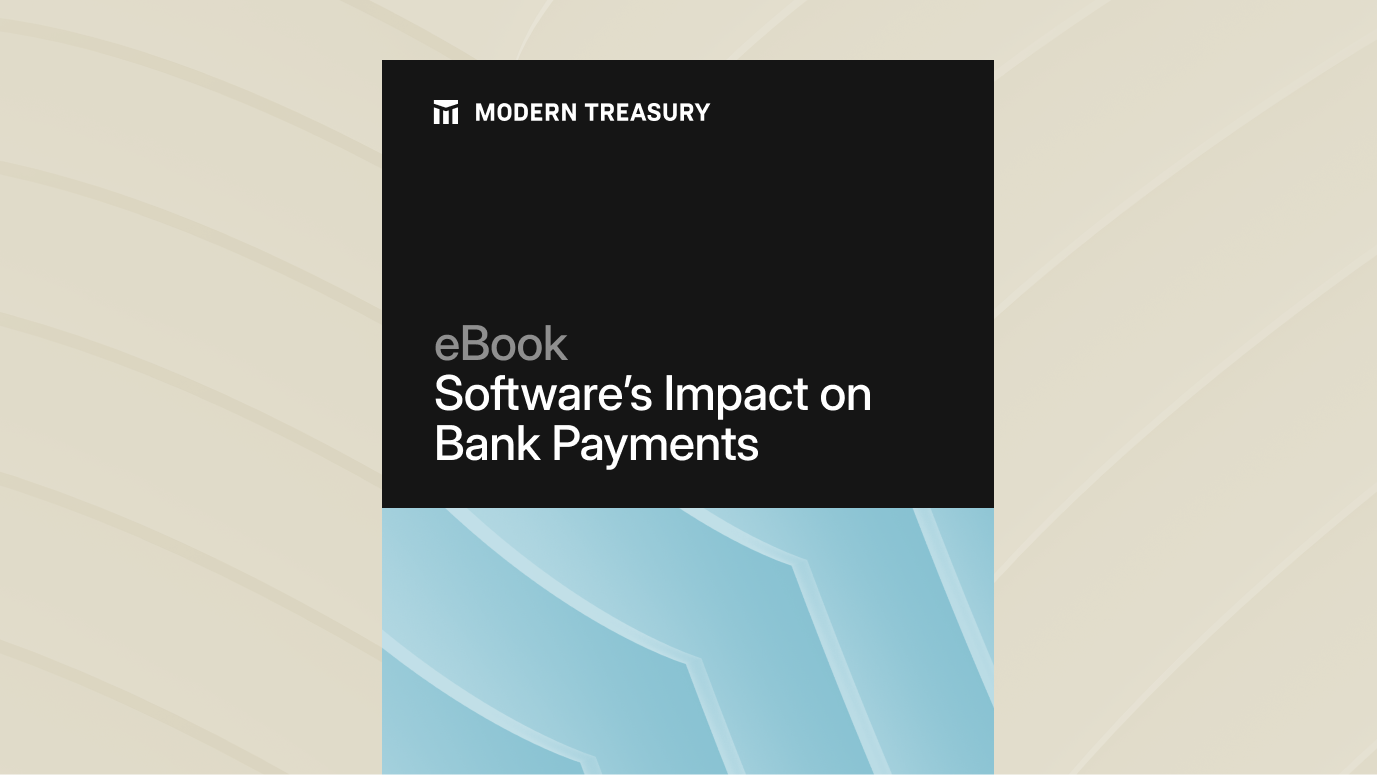Join us at Transfer 2025 to hear how industry leaders are building payments infrastructure for a real-time world.Register Today →
Software is Changing Payments and Banks Should Care
Software-integrated payments are fast-becoming the new normal. In this journal, we look at how software infiltrated the payments space, how it enables better experiences, and why this matters.

Introduction
In the future, all payments will begin and end in software. In their annual report, McKinsey writes:
“As payments become integrated into broader customer journeys [i.e., software], the sector’s boundaries have naturally expanded … payments as a discrete experience is disappearing. The payments industry now encompasses the end-to-end money movement process, including the services and platforms enabling this commerce journey.”
Already, software-integrated payments are ubiquitous. Consider how we travel: to pay for transportation, we rely upon rideshare software companies, Uber and Lyft. We book lodging with software platforms, AirBnb or VRBO. We order delivery through Postmates and Doordash, and take-out through Toast or LevelUp. In each case, payments are so tightly embedded within a software workflow that we forget it’s even there.
Software-integrated payments are the fastest growing vector across the payments industry as entire industries and workflows digitalize. Global Payments noted that 60%-70% of new clients come from software channels. The industry is expected to grow to $230 billion in new revenue by 2025—an increase of 922% from 2020. It’s a $7 trillion dollar opportunity.
How Did Software Infiltrate the Payments Space?
Software-integrated payments are the result of two converging internet trends: the evolution of software and the digitization of financial services. It’s changing how we distribute and interact with financial products and services.
The Internet Set the Stage
In 2011, Marc Andreessen famously wrote in the WSJ that “software is eating the world.”
He argued that we’d reached a turning point in software innovation. Internet adoption had achieved a critical mass; digital infrastructure and software programming tools had reached a level of maturity to foster widespread innovation.
In the years since, software growth has exploded, delivering new experiences and replacing manual workflows. Under the surface, entire industries are being remodeled by software. Restaurants use software systems to manage operations and improve margins. Property management companies use software to engage tenants and manage properties. Hospitals have implemented software to undergird all patient interactions. Even construction, freight, and logistics companies now use software to drive coordination and efficiency.
Rapid payments advances have accompanied this software innovation. As Andreessen was writing his essay in 2011, payment facilitators (payfacs) had emerged to help companies seamlessly accept payments. Payfacs created the operational infrastructure to enable marketplaces and software applications to easily incorporate payments. The emergence of software marketplaces such as Uber, Lyft, AirBnb, and Etsy pulled this model forward significantly.
Software Solves Hard Problems
To paraphrase Credit Suisse: “Software is eating the world, and payments are taking a bite.”
For developers, integrating software and payments unlocks opportunities to create more engaging, compelling, and ultimately useful products and applications. To give a couple examples:
- Toast, a software platform for restaurants, integrates payments with business management software to help mom-and-pop restaurants manage their entire business operations.
- Coupa, a spend management platform, added payments (CoupaPay) to help clients pay suppliers directly within their software application.
- Airbase, an expense management software platform, integrates payments with software workflows to give companies control and visibility over their company spend.
Historically, software-integrated payments have centered around cards, as the alignment inherent in card networks (e.g., the rules, the standardization, the shared incentives) has fostered innovation and joint investment. Nevertheless, this innovation is expanding. As software development continues across the economy—industries such as insurance, real-estate, education, logistics, lending, healthcare, and financial services—software companies are now incorporating bank payment rails (e.g., RTP, ACH, wire) as well.
How Software Can Enable Better Banking Experiences
As a new payment flow, software-integrated payments have distinct characteristics and needs. And these needs are simply not well-served by the available banking infrastructure today.
Our founders felt these gaps first hand at LendingHome, building a software marketplace for real-estate borrowers. They connected the software platform to the plumbing of the banking system. And were overwhelmed by the tooling and infrastructure required to make this translation work.
In particular, they saw that payments—while important—was just one component of the digital experience. They also needed:
- Software for workflow: To onboard users, to check identities and verify accounts, to run compliance, to collect and store counterparty information. They needed software to create Nacha and wire payment files programmatically, and a robust reconciliation engine (with webhooks) to correctly track and attribute each payment throughout the banking system.
- Dashboards: To report on the business, to monitor platform activity, oversee cash balances, track failed payments, and collect approvals for transactions above a certain size. As a platform, moving other people’s money, they needed dashboards for our Client Support team to answer queries:“Hey, I don’t think the payment I’m owed has arrived yet. Where is it?”
Due to the speed of transactions, this could not be managed manually.
Why Does This Matter?
Outside of the sheer growth of this industry, this convergence of software and payments matters because it has a profound impact on financial services. Software has become the front-door into our financial lives: the “new bank branch.” Activities that once took place in person or over the phone—getting a loan, making a payment, investing in a security—now occur entirely within software. Covid has only accelerated this trend. To remain a part of clients' financial lives, banks need to play well with software.
In addition, the convergence of software and payments has ramifications on our payment habits. As an example, as software expands, we expect to see a tender shift towards the bank payment rails, such as ACH and RTP. After all, when I have an established relationship with a software offering, there’s less of a need for the payment intermediation offered by the credit card rails.
How Modern Treasury Can Help
At Modern Treasury, we built a platform to complement banks’ existing products to help them prepare for a future led by software. We’re here to help them future-proof their business so that they can participate in and lead in the next phase of financial services.
To learn about our bank partnerships program, please reach out to banks@moderntreasury.com.
Serving banks to better serve everyone
Learn how our bank partnerships work and how they’ll benefit you.







